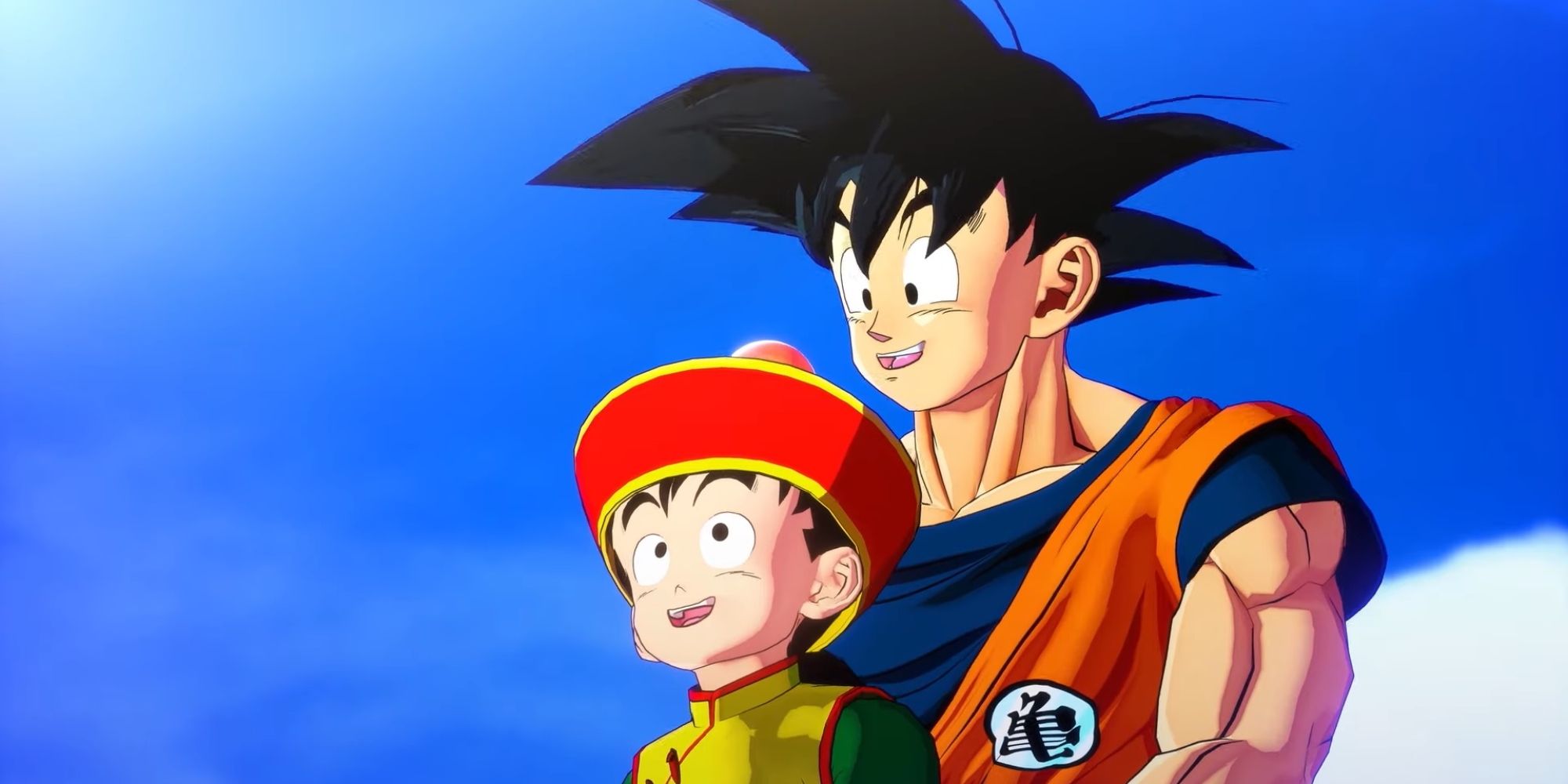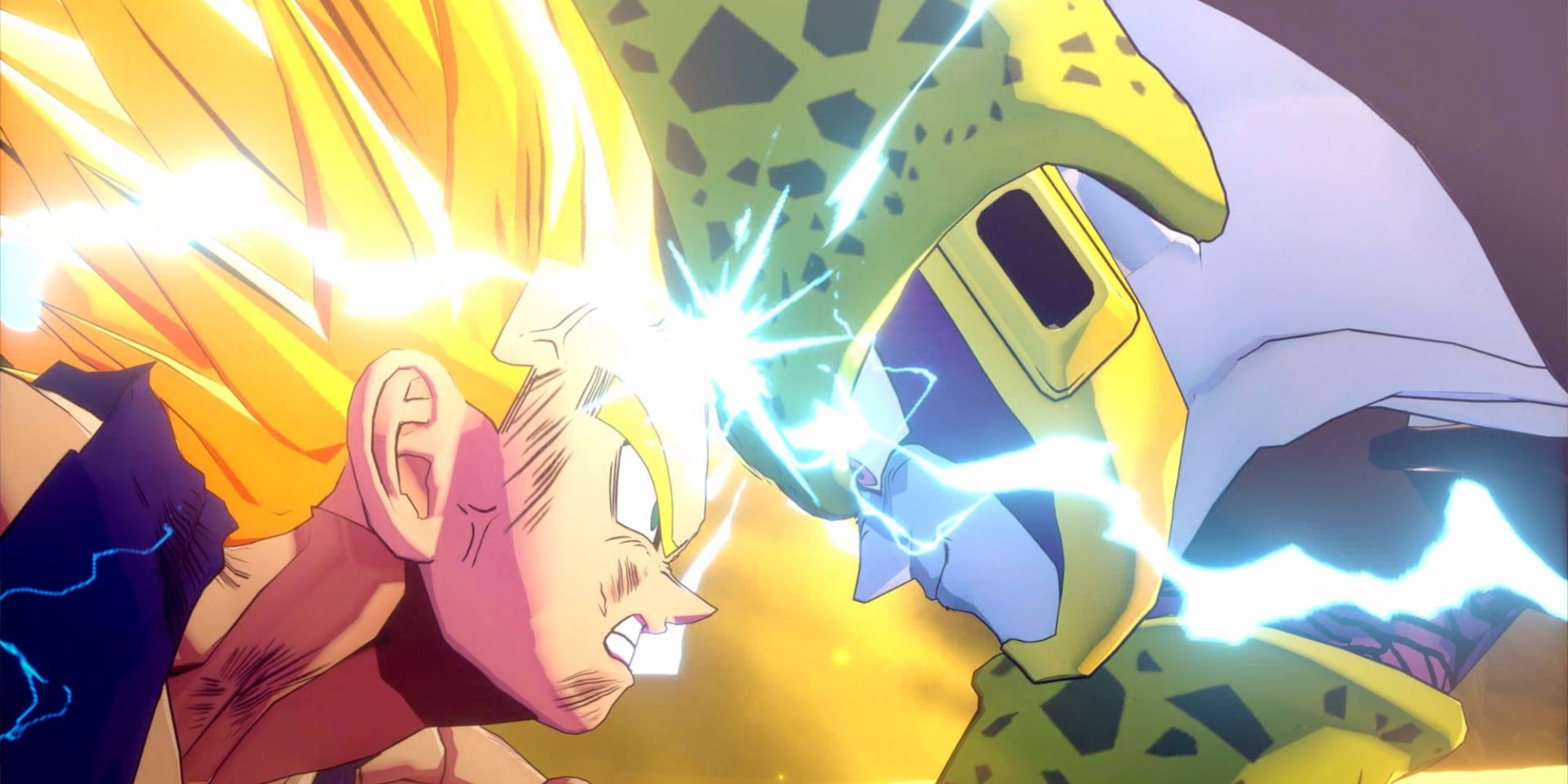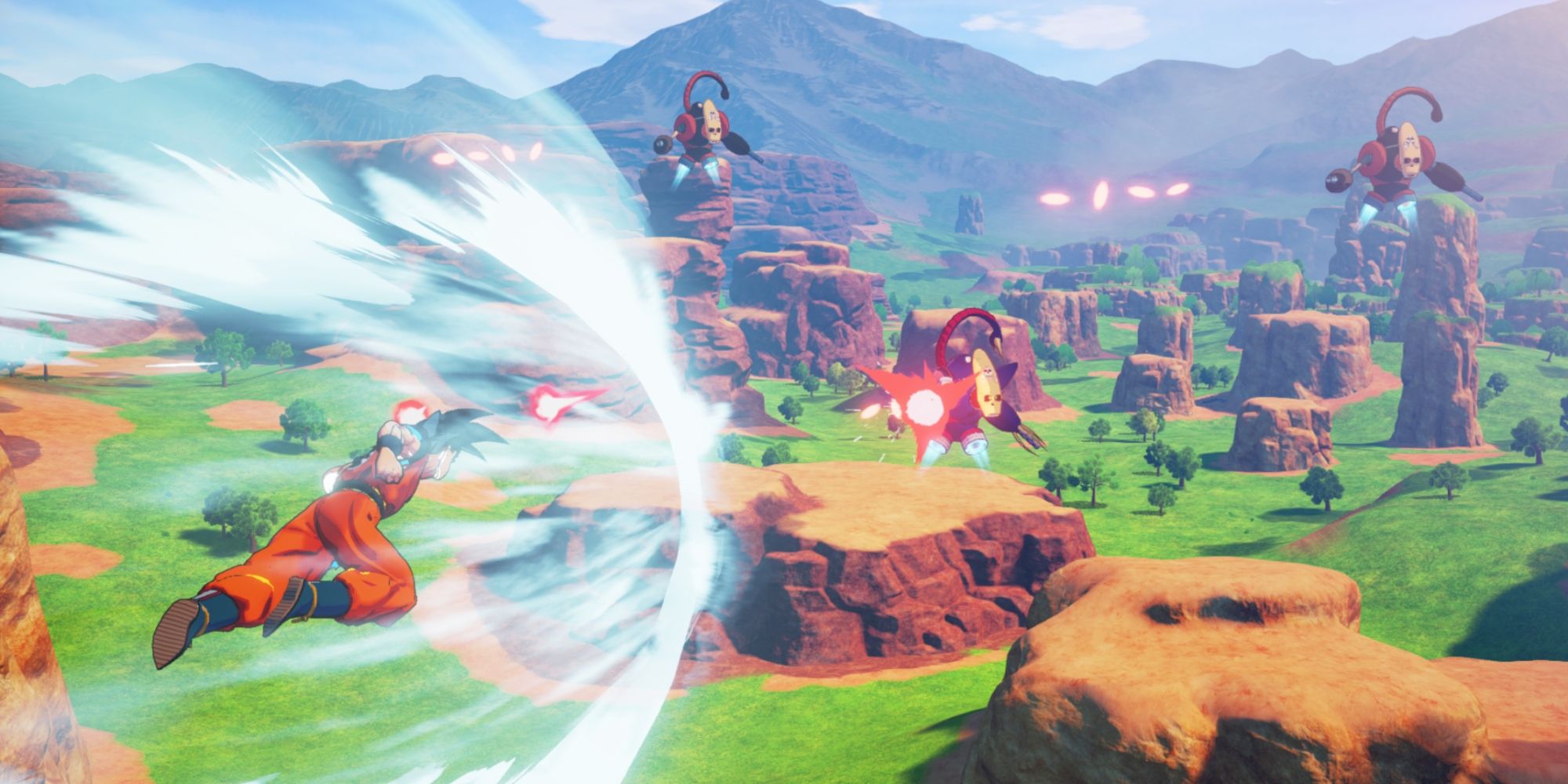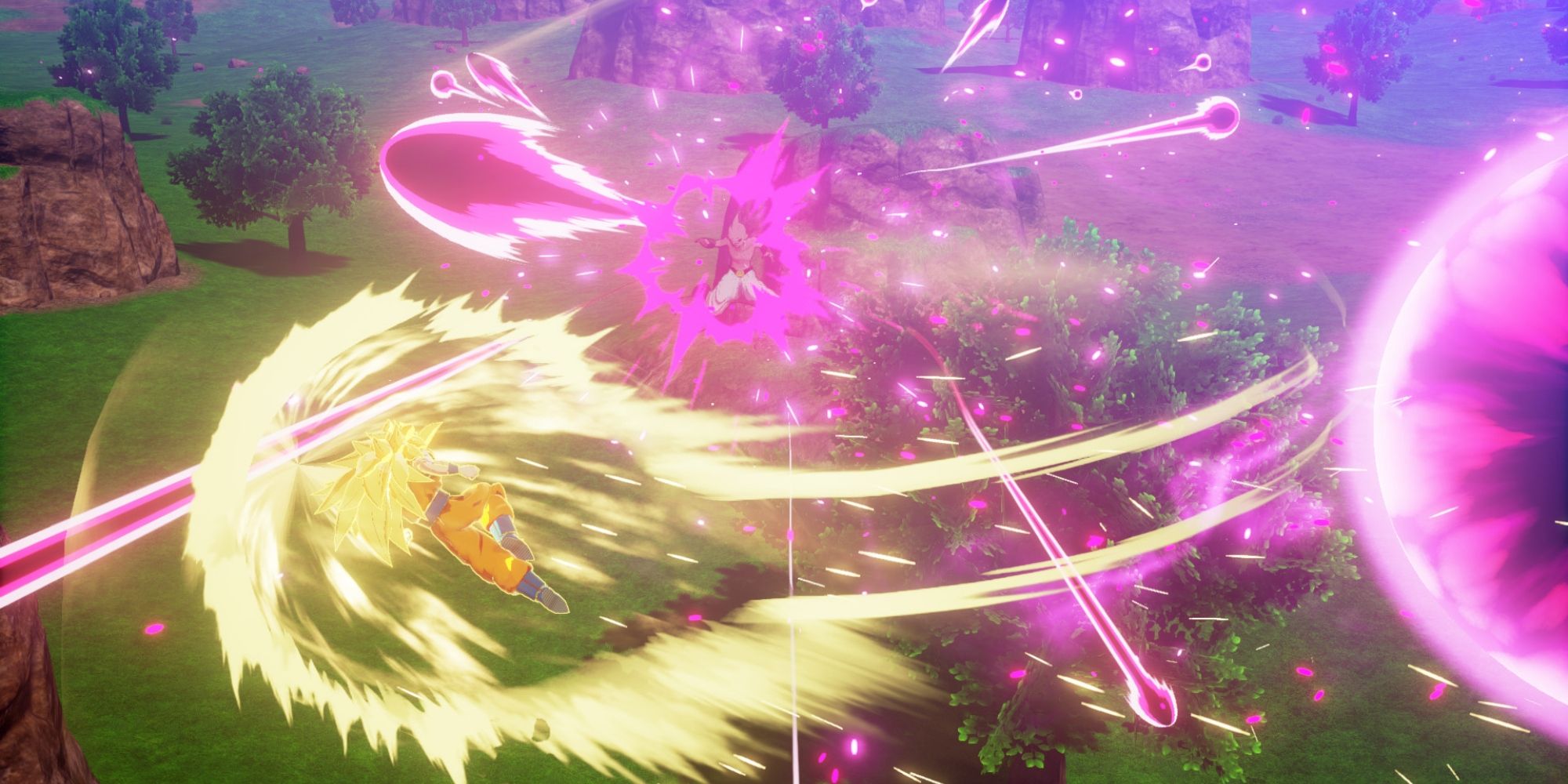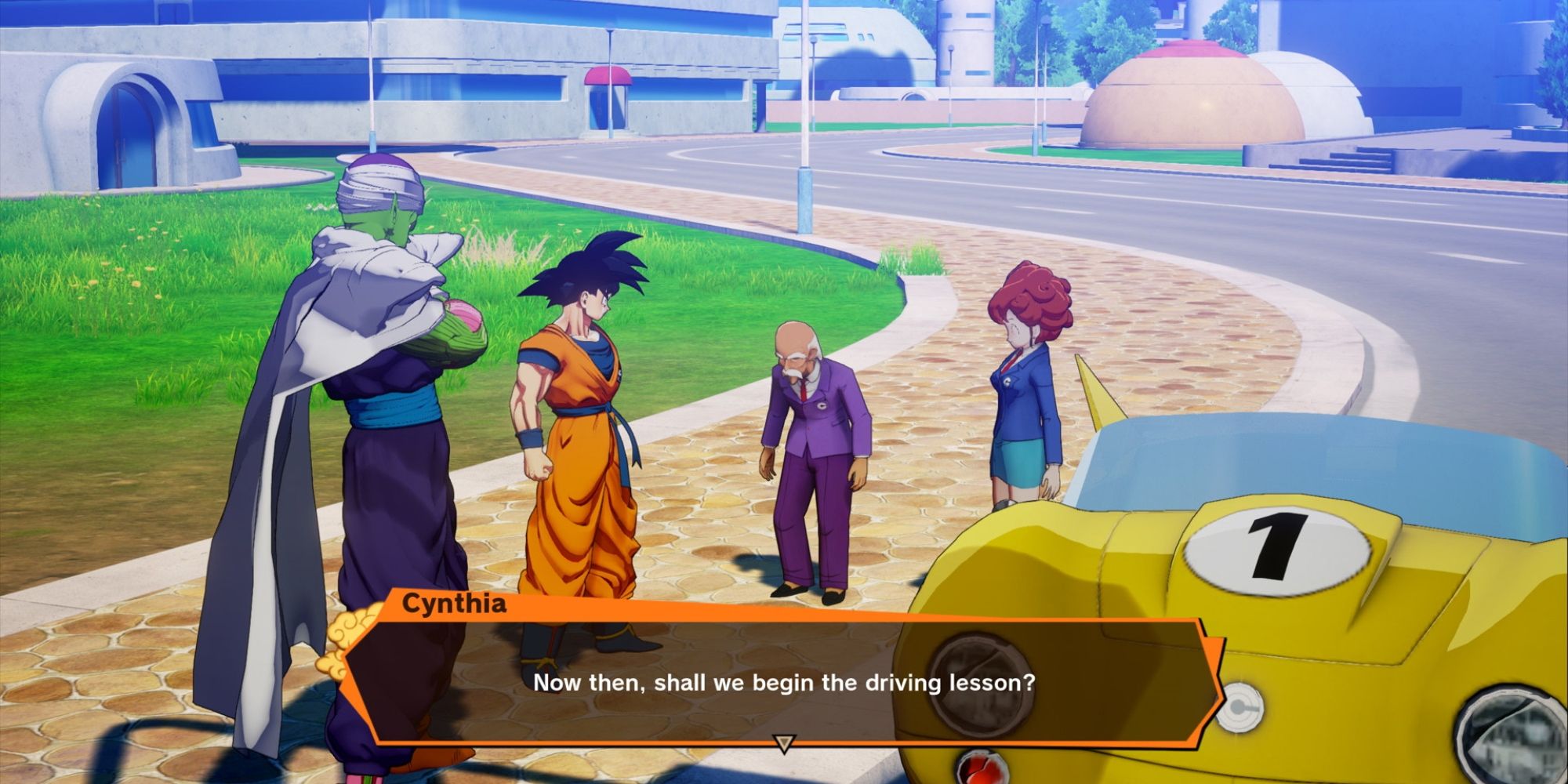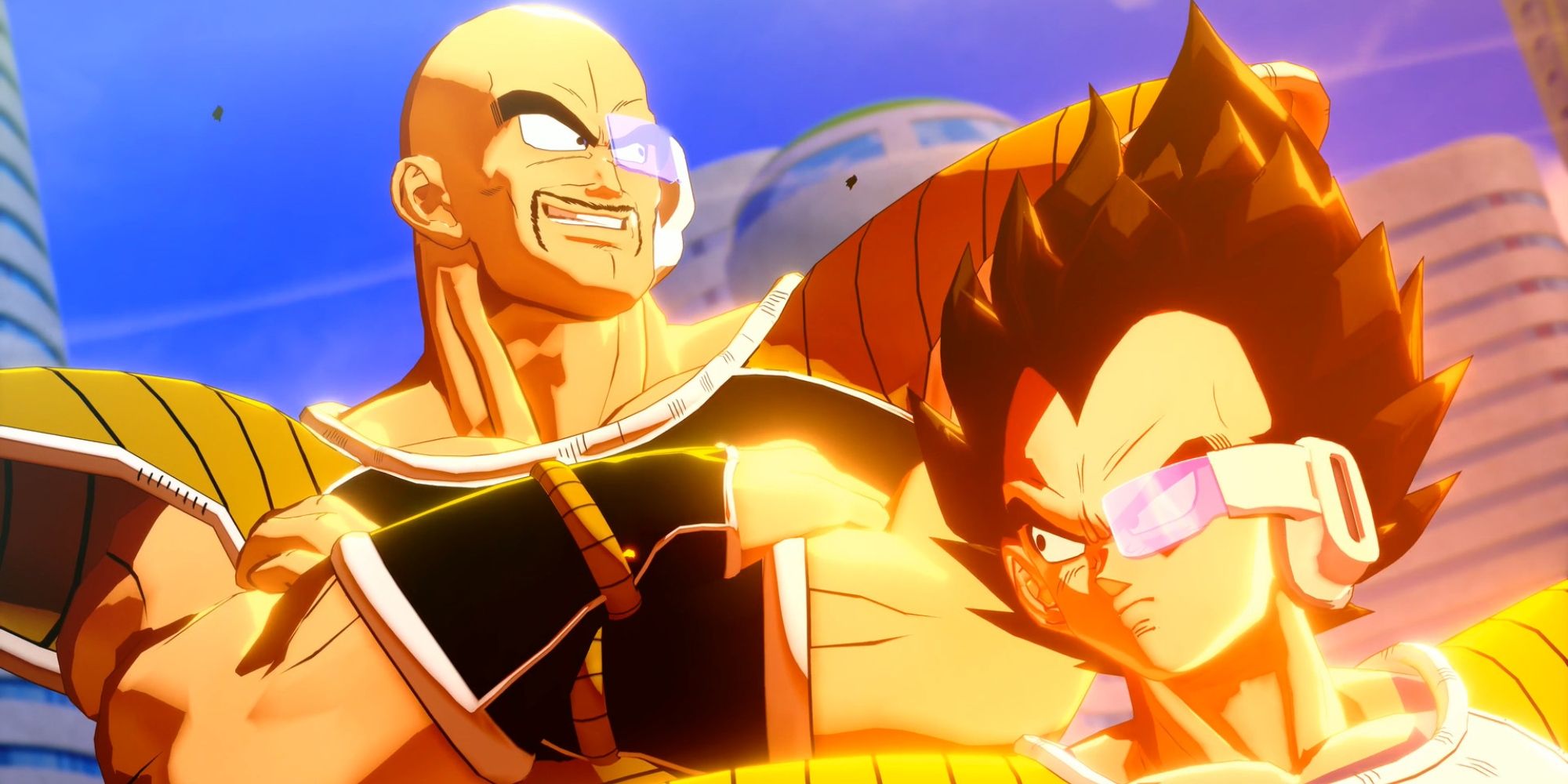Dragon Ball Z: Kakarot successfully captures the elements that make Dragon Ball Z tick, both good and bad. Epic, world-shattering battles routinely occur after formulaic storytelling and tedious pacing. When Kakarot clicks, throwing Kamehamehas with reckless abandon is a blast. Much like Goku’s son Gohan though, its attempt at delivering a compelling open-world RPG falls short of delivering on its potential.
Don’t be fooled by Goku’s birth name in the game's title. Though billed as the story of Dragon Ball’s top star, this is little more than yet another interactive retelling of DBZ, from the arrival of the Saiyans to Majin Buu. That means players control other characters, like Vegeta and Gohan, as often as Goku himself - if not more so. While that makes sense from a storytelling perspective–Goku is out of commission several times throughout DBZ–it makes the premise feel somewhat misleading.
The idea of seeing a version of this tale from purely the Goku perspective would have been refreshing instead of spending dozens of hours watching the same old story unfold. Despite this, Kakarot at least does a phenomenal job presenting that story. Cutscenes, especially the action-centric ones, look fantastic and perfectly capture the show’s signature style. If nothing else, newcomers may find Kakarot to be an adequate alternative for digesting this sprawling narrative as opposed to watching hundreds of anime episodes.
Side quests and playable intermissions between sagas offer the only places where Kakarot gets creative with its storytelling, but these diversions can be hit and miss. Some are humorous, such as helping a rogue Frieza Force soldier who aspires to become a chef. Others are disappointingly unrealized, including one based on the beloved driving school episode that doesn’t even let you race Piccolo. Even when side quests have cool premises, they all suffer from a lack of gameplay variety and depth. You’re either tasked with punching the same limited number of enemies (why do so many citizens own the same killer robots?) or performing simple fetch quests for materials and ingredients. When the game does offer a change of pace, such as a baseball mini-game, it happens so infrequently that it’s a jarring surprise each time.
Side content may be average but Kakarot’s exploration does a better job of realizing the power fantasy of controlling god-like martial artists. Soaring around the semi-open worlds feels thrilling, though the flight controls could be better. Using the two right triggers to both ascend and descend feels somewhat clunky; one of those functions should have been mapped to a left trigger. Still, once you get used to it, barreling through mountains and into oceans never gets old. Sprinting like The Flash on foot is entertaining in its own right.
Dragon Ball Z: Kakarot's vibrant world looks great and it's neat to see familiar locations like West City and Kami’s Lookout rendered to scale. Wildlife, including roaming dinosaurs, may be limited compared to similar games, but they breathe some semblance of life into the surroundings. For diehard fans, bumping into the myriad of familiar faces throughout both DBZ’s history and original Dragon Ball offers a charming cherry on top. It's a treat to reunite with favorites like Eighter, Launch, and the World Tournament Announcer even if they’re little more than talking sign posts and mission givers. Collectible memories that recall pivotal events from the Dragon Ball anime offer another fun dose of nostalgia.
The way Kakarot alters its world to fit whatever’s happening in the story is both commendable and occasionally frustrating. Characters and side missions will be locked out entirely during moments where it wouldn’t make narrative sense for them to be active. That can be a problem when you might need to shop or train, but Kakarot does a good enough job communicating these changes ahead of time. Since the side stuff isn’t great, odds are you’ll enjoy being railroaded on the critical path anyway.
Kakarot's combat shines brightest during the big one-on-one bouts against iconic foes like Frieza and Cell. Though not deep, these clashes offer a mindless sort of fun that captures the flair source material. Boss adversaries sport just enough diversity in their offense to make them feel unique enough from each other. Some bad guys even force new strategies, like the Androids who heal themselves by absorbing energy attacks. Having up to two party members that attack or defend at your behest adds a welcomed layer of strategy. Unfortunately, Kakarot restricts access to a party more often than it should–most of the game is spent fighting alone. Perhaps that's a necessary evil as battles involving multiple combatants often devolve into incomprehensible (but fun) clashes of fireballs and flashy effects.
Engaging in random battles, on the other hand, becomes tedious after several hours due to a disappointing lack of enemy variety. Dragon Ball Z 's story never featured many grunt-type enemies and it shows badly here. Get used to fighting bland robots, Frieza goons, or Saibamen for hours on end. Baddies often overstay their welcome, too, thanks to the multiple health bars they have. Even the more challenging, legendary-style foes are poorly implemented. Their levels aren’t revealed until after you trigger the battle, meaning you’re often blindly entering fights way above your weight class. Since enemy levels scale with you, this makes it tough to know when you’re ready to take on these top-tier foes which, again, are just the same opponents but tougher. Not that it really matters; the rewards for winning these fights aren’t worth the effort anyway.
The fruits of this labor comes in unlocking new abilities and gaining Soul Emblems, character coins used on the Community Board. This progression web grants bonuses depending on how character emblems are arranged. It's surprisingly engrossing finding ways to connect Goku and Gohan or all the Namekian characters in order to reap as many benefits as possible. These offer stat bumps in areas such as combat, cooking, and training. The downside is that most emblems can only be obtained by completing side quests. Expect to spend time grinding out missions for a full set.
Kakarot is a lengthy experience that can sometimes feel like a drag due to uneven pacing and the grind-focused progression. The Namek and Android/Cell sagas take ages while the Buu arc flies by in comparison. Training to unlock new skills involves fighting the exact same battles ad nauseam. Other diversions like hover car races, assembling vehicles in Bulma's lab, or demolishing enemy strongholds are shallow and feel tacked on for the sake of padding out the world. Cooking dishes for stat bumps rarely feels necessary since you can usually handle anything on your own. Like Cell, Kakarot assimilates the best elements of other open-world games but, unlike Cell, fails to achieve perfection.
When Dragon Ball Z: Kakarot is just being Dragon Ball Z , i.e. a sensory overloading action romp, it's an empowering and enthralling experience. But that novelty is just barely enough to overcome the flat open world and underwhelming mission design. With deeper activities and stronger variety, this could have rivaled Dragon Ball FighterZ as the best game Goku has ever graced. Some fans will be satisfied regardless, but others will see a promising fighter that should enter the hyperbolic time chamber for more training.
Dragon Ball Z: Kakarot is available now for PlayStation 4, Xbox One, and PC. Screen Rant was provided a digital PS4 code for the purpose of this review.

